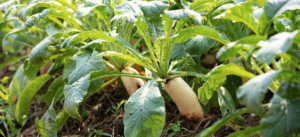otherwise Use of Cover Crops in Horse Pastures:
Use of Cover Crops in Horse Pastures:
Though it is still only late spring, consider cover crops ahead of time. Many farms plant them in the late summer or early fall. They provide protective ground cover during the winter. The crops are then grazed, harvested, or tilled into the soil in the spring. In addition to erosion control and protection of water quality, cover crops have favorable effects on soil structure, weed suppression, and biodiversity. The use of cover crops on horse operations has not been studied until recently. Researchers in the Midwestern United States evaluated several cover crop forages in pastures specifically intended for horses.*
Depending on the plant species, cover crops offer various, and oftentimes specific, benefits. Annual ryegrass and winter have many uses. For example, their high germination rates, ease of establishment, and efficiency in covering barren soil, all of which foster weed suppression and forage output. The nitrogen fixation properties of legumes, like berseem clover, boost soil fertility. Taproot species, such as purple top turnip and daikon radish, loosen shallow layers of compacted soil. In addition, they scavenge residual nitrogen. Leaching may have taken it. The channels created by the growing taproot, a process called “biodrilling,” allow other pasture plants to more easily access soil nutrients and moisture.
Horse Owner Perks:
In addition to soil and environmental advantages, cover crops offer a particular perk to horse owners. They can prolong the grazing season and reduce the reliance on preserved forages, particularly hay, in the late fall. In years when hay is expensive or in short supply, this may prove advantageous.
The objectives of this study were to evaluate forage mass, forage nutrient composition, and preference of annual ryegrass, winter rye, berseem clover, purple top turnip, and daikon radish by horses. Forage mass is the total dry weight of forage per unit of land.
Four mature mares grazed seeded-singularly-or-as-mixtures-cover-crops for two consecutive fall seasons. Prior to grazing, forages were sampled to determine forage mass, root mass, and nutrient composition. To estimate preference after grazing, forages were visually assessed by researchers for the percentage of removal on a scale of 0 (no grazing activity) to 100% (all available forage grazed).
Berseem clover was the lowest producing forage. Minimal differences existed among the other cover crops. Horses preferred the berseem clover. The preferred turnip and radish least. Winter rye and annual ryegrass in monoculture and when seeded with berseem clover were moderately preferred (20%–68% removal). These species also met the digestible energy and crude protein needs of sedentary mature horses. However, the calcium-to-phosphorus ratio was inverted.
In Conclusion:
According to the researchers, “placing a priority on preference, berseem clover, annual ryegrass, and winter rye appear to be suitable cover crops to extend the grazing season in horse pastures.”
“While grazing pastures may seem the most natural of feeding systems for horses, health concerns can make grazing specific plants dangerous for certain horses,” noted Catherine Whitehouse, M.S., a nutritionist for Kentucky Equine Research. “When planning any upgrade to a grazing area, consider the horses that will eventually graze it. Select proper forages for horses predisposed to laminitis or other metabolic challenges. Consider their needs and long-term well-being.” Limit grazing to certain times of the day.
Resources:
In conclusion, do you have questions about the Use of Cover Crops in Horse Pastures? Contact us at J & J Hay Farms by clicking here!
Article by: Kentucky Equine Research
*Prigge, J.L., C.C. Sheaffer, J.M. Jungers, A.L. Jaqueth, H.L. Lochner, and K.L. Martinson. 2021. Forage characteristics and grazing preference of cover crops in equine pasture systems. Journal of Equine Veterinary Science 103:103663.
